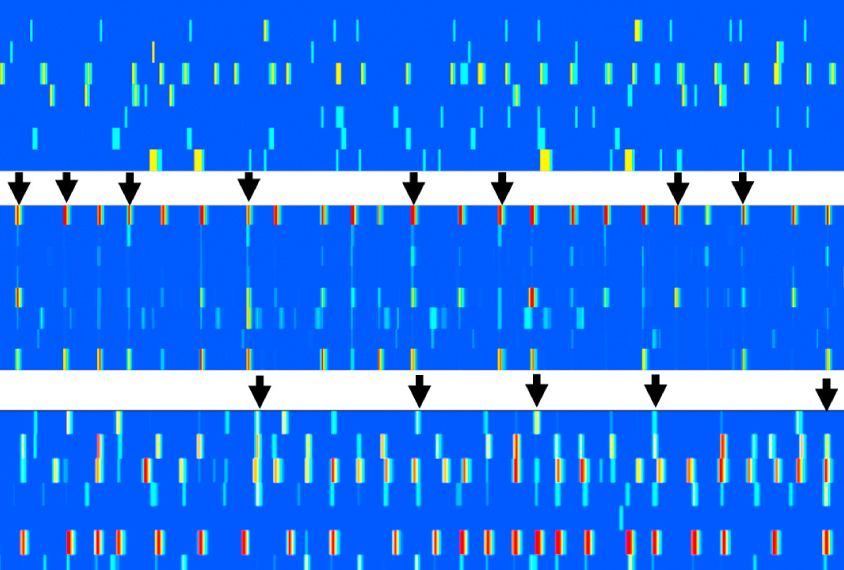
Loss, doubling of Rett gene produce similar brain glitch
Mice with either too little or too much MeCP2, the gene mutated in Rett syndrome, show similar malfunctions in a learning and memory circuit.
Mice with either too much or too little MeCP2, the gene mutated in Rett syndrome, show similar malfunctions in a learning and memory brain circuit, according to a new study1. The findings may help explain why people with Rett syndrome and those with MeCP2 duplication syndrome share common features.
Mouse models of Rett and MeCP2 duplication syndromes show different patterns of gene expression and characteristics of their neurons. But the mice — as well as people with either syndrome — share several traits, including autism features, seizures, movement difficulties, stereotyped behaviors and learning and memory difficulties.
“We remained baffled that their clinical features look very similar, but yet, at the molecular level, they are the opposite of each other,” says lead investigator Huda Zoghbi, professor of molecular and human genetics at Baylor College of Medicine in Houston, Texas. Her team reported the findings 17 August in Neuron.
The researchers looked at brain circuits in both sets of mice. They found that the mice show similar abnormalities in the firing patterns of some neurons in the hippocampus, a brain area involved in learning and memory.
“This is really cool, because it shows a convergence across opposing genetic manipulations,” says Vikaas Sohal, associate professor of psychiatry at the University of California, San Francisco, who was not involved in the study. “People have been looking for these points of convergence for a long time.”
Synchronous signals:
Zoghbi and her colleagues studied male mice that either lack MeCP2 or carry an extra copy of the gene throughout the brain. To mimic Rett syndrome, which primarily affects girls, the researchers also looked at female mice that lack MeCP2 in roughly half their brain cells. They engineered all of the mice with sensors that light up when neurons fire.
The researchers examined firing patterns in the hippocampus in brain slices and in living 8- to 12-week-old mice. In controls, hippocampal neurons fire sparingly and asynchronously — the typical pattern for that region. By contrast, neurons in all three mutant strains show relatively synchronized firing.
This ‘hypersynchrony’ might underlie the animals’ learning and memory problems, and possibly their seizures, says Lucas Pozzo-Miller, professor of neurobiology at the University of Alabama at Birmingham, who was not involved in the study. “If there is enhanced synchrony in this area, you run the risk of epilepsy and seizures — uncontrolled discharges, electrical storms.”
The findings also jibe with reports of synchrony in other brain regions in mouse models of autism. Earlier this year, Sohal reported hypersynchrony among pairs of neurons in the cerebral cortex, the brain’s outer shell, in two other autism mouse models2. And in 2013, another group reported an increase in synchrony in the cerebral cortex of a mouse model of fragile X syndrome3.
“Taken together, there’s an emerging story about hypersynchrony and increased correlations in autism that seems to go across developmental time points, models and brain regions,” Sohal says.
Stimulating circuits:
Zoghbi’s team made mice that either lack or have an extra copy of MeCP2 in only excitatory neurons, which activate other neurons, or in inhibitory ones, which dampen brain activity.
They found that hypersynchrony appears only when the gene is altered in excitatory neurons. This suggests that excitatory neurons are responsible for maintaining asynchrony.
Hypersynchrony also crops up in mice missing the gene from only inhibitory cells, but only in the presence of a drug that blocks inhibitory signaling. This finding suggests that inhibitory neurons control the degree of synchrony in response to signaling.
Zoghbi and her colleagues found yet another similarity between mice lacking MeCP2 and those with a duplication of the gene: Inhibitory neurons in the hippocampus of both of these models respond tepidly to excitatory stimulation, which is necessary for inhibitory neurons to function properly.
This defect in excitatory signaling may underlie the cells’ abnormal synchrony. Electrically stimulating a nerve bundle that sends signals to the hippocampus normalizes this effect and restores synchrony in brain slices from female mice lacking MeCP2, Zoghbi’s team found.
Last year, her team showed that this treatment, called deep brain stimulation, alleviates learning and memory problems in these animals4.
The researchers are studying whether the treatment restores normal hippocampal function in living animals. They are also exploring its effects in mice with an extra copy of MeCP2.
References:
Recommended reading

New organoid atlas unveils four neurodevelopmental signatures

Glutamate receptors, mRNA transcripts and SYNGAP1; and more

Among brain changes studied in autism, spotlight shifts to subcortex
Explore more from The Transmitter
Can neuroscientists decode memories solely from a map of synaptic connections?

AI-assisted coding: 10 simple rules to maintain scientific rigor
